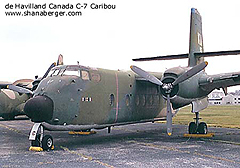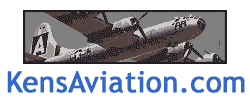|

|
|
In
1956, de Havilland Canada began work to develop a DC-3 size aircraft
with the STOL capabilites of the Beaver. The prototype DHC-4
Caribou first flew in 1958. The Royal Canadian Air Force
designated its Caribous the CC-108.
The U.S. Army began purchasing the DHC-4 in 1961
for tactical airlift to forward battle areas. The Army first
designated the Caribou the AC-1 then changed the designation
to CV-2 in 1962. The Air Force assumed responsibility
for all fixed-wing tactical aircraft in 1967 and again redesignated
the Caribou...this time as the C-7. The Caribou saw
action during the Vietnam conflict.
Production ended in 1973 after over 300 were
built. |
| |
|
|
| Specifications
(C-7A) |
|
Designations |
|
|
|
|
|
|
|
 | DHC-4: Company model number |
 | CC-108: RCAF designation |
 | AC-1: U.S. Army transport designation
(prior to 1962) |
 | CV-2: U.S. Army transport designation
(1962-1967) |
 | C-7: U.S. Air Force transport
designation (after 1967) |
|
| |
|
|
|
Related
Pages |
|
Related Websites
|
| |
|
|
|
|
|
|
| |
|
|
|
Stuff
You Can Buy |
| |
|

|
Book:
C-7 Caribou in action
Squadron/Signal |

|
Print:
C-7 Caribou
Ken Fox |
|






